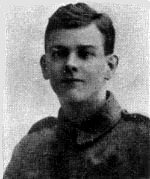|
Oct 29, 1893
|
Born in Ottawa, Ontario to Henry and Mary (nee
Pollock) Quinney
|
|
Nov 9, 1914
|
Attested into the 21st Battalion in Kingston, Ontario
Ø Number 59816 (temporary number 913)
Ø Next of kin given as Henry Arthur Quinney, 19 3rd
Ave., Ottawa, Ontario
Ø Previous occupation given as Clerk
Ø Previous military experience given as 43rd Regiment,
Duke of Cornwall’s Own Rifles
Ø Religion not stated
Ø Posted to “H” Company
o This was later reorganized into “D” Company
The 21st Battalion trained in the Kingston, Ontario
area through the winter of 1914-15.
|
|
May 6, 1915
|
Embarked the RMS Metagama in Montreal, Quebec

|
|
May 15, 1915
|
Disembarked in Devonport, England and the
battalion proceeded to the West Sandling Camp, near Hythe, Kent to continue
training
|
|
Sep 14, 1915
|
Embarked the St. Seiriol in Folkestone
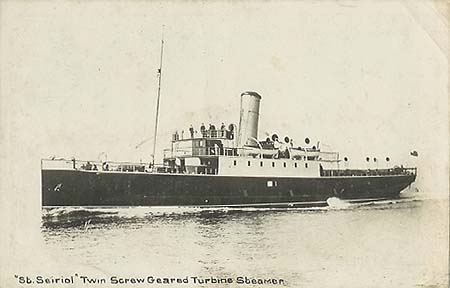
|
|
Sep 15, 1915
|
Disembarked in Boulogne, France and the battalion
proceeded to St. Omer
|
|
Oct 3, 1915
|
Attached to the 2nd Division Mining
Section
|
|
Nov 4, 1915
|
Admitted to the No. 4 CFA (Canadian Field
Ambulance) with a diagnosis that reads Acute Rheumatism
|
|
Nov 8, 1915
|
Transferred to the 2nd Division Rest
Station and the diagnosis was changed to read Myalgia
|
|
Nov 15, 1915
|
Transferred via the No. 7 AT (Ambulance Train)
and admitted to the No.13 General Hospital in Boulogne, France
|
|
Nov 18, 1915
|
Invalided to England aboard the Hospital Ship St.
Denis
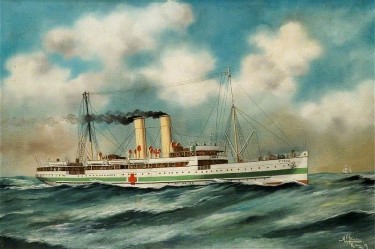
On arrival in England, he was admitted to the
Duchess of Connaught Canadian Red Cross Hospital in Taplow. On admission he had a persistent cough and
pains in his knees
Transferred to 39th Reserve Battalion
for pay purposes while in hospital
|
|
Dec 26, 1915
|
Transferred to the Hillingdon House Convalescent
Hospital in Uxbridge
|
|
Dec 29, 1915
|
Discharged to duty with the 39th
Reserve Battalion in West Sandling from hospital
|
|
Mar 8, 1916
|
Transferred to the CCAC (Canadian Casualty
Assembly Centre)
Medical Board in Shorncliffe notes he suffers
from pain in his knees and recommends he have light duty for 8 weeks
|
|
May 12, 1916
|
Attached to the Pay Office in London for duty
|
|
Dec 8, 1916
|
The Pay Office was changed to be known as the No.
1 CAPC (Canadian Army Pay Corps) London
|
|
Mar 10, 1917
|
Transferred to the EORD
(Eastern Ontario Regimental Depot) and remained attached to the Canadian Army Pay Corps Pay Office in London for duty
|
|
Apr 4, 1917
|
Ceased to be attached to the pay office and is transferred
to the Canadian Army Pay Corps and posted to the London Pay Office
Appointed to the rank of Acting Sergeant and to
receive pay as Sergeant Clerk
|
|
Aug 30, 1918
|
Medical Board in London notes that he suffers
from Gastritis.
Ø Complains of burning in
stomach and a tendency to vomit after eating.
Ø Fine tremor in fingers
Ø Physical condition is poor and
man is very anaemic
Ø Is on a special diet and
should be kept under observation for a Gastric Ulcer
|
|
May 6, 1919
|
Attached to No. 5 Wing No. 3 Military District at
Kinmel Park, Rhyl pending return to Canada
|
|
May 10, 1919
|
Embarked the SS Olympic in Southampton
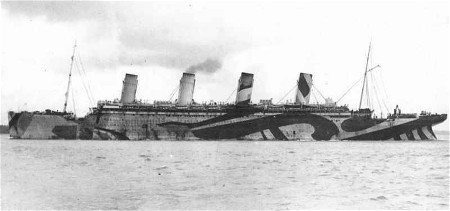
|
|
May 16, 1919
|
Disembarked in Halifax, Nova Scotia and proceeded
to Quebec City, Quebec
|
|
May 19, 1919
|
Discharged from the CEF in Quebec City, Quebec
Ø Rank on discharge Acting
Sergeant
Ø War Service Badge Class “A”
issued number 244808
Ø Proposed residence on
discharge 19 Third Ave., Ottawa, Ontario
Following his discharge, the 1914-15 Star,
British War Medal and Victory Medals were sent to him at 19 Third Ave.,
Ottawa, Ontario
|
|
Mar 21, 1970
|
Arthur John Quinney died while a patient of the
Riverside Hospital in Ottawa and was buried in the Saint George’s Hawthorne
Cemetery, Ottawa, Ontario
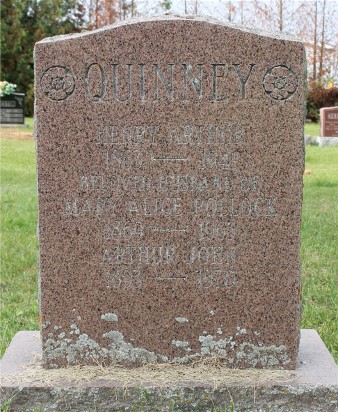
|
|
